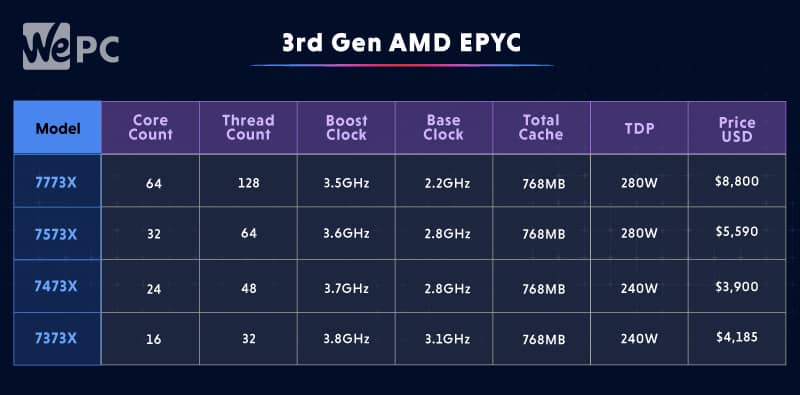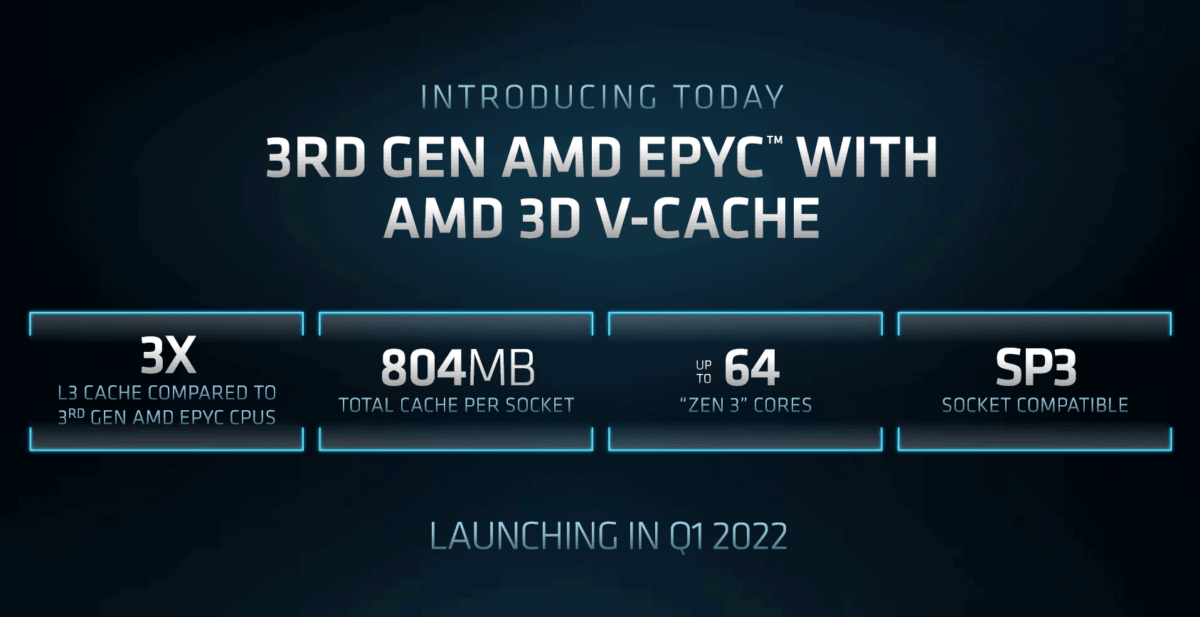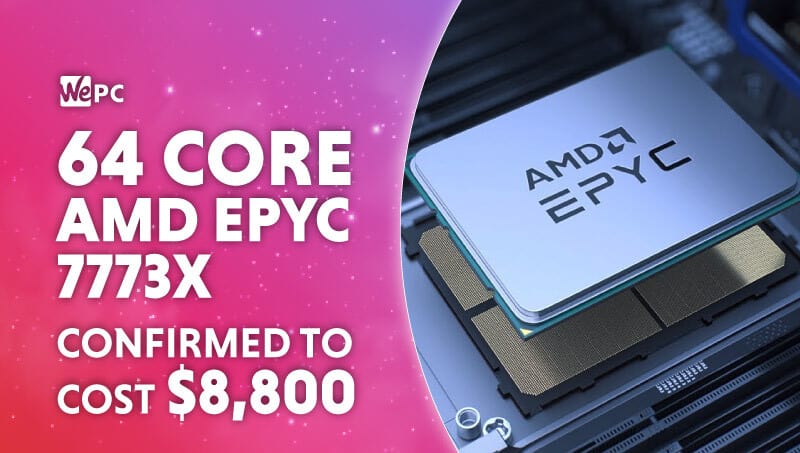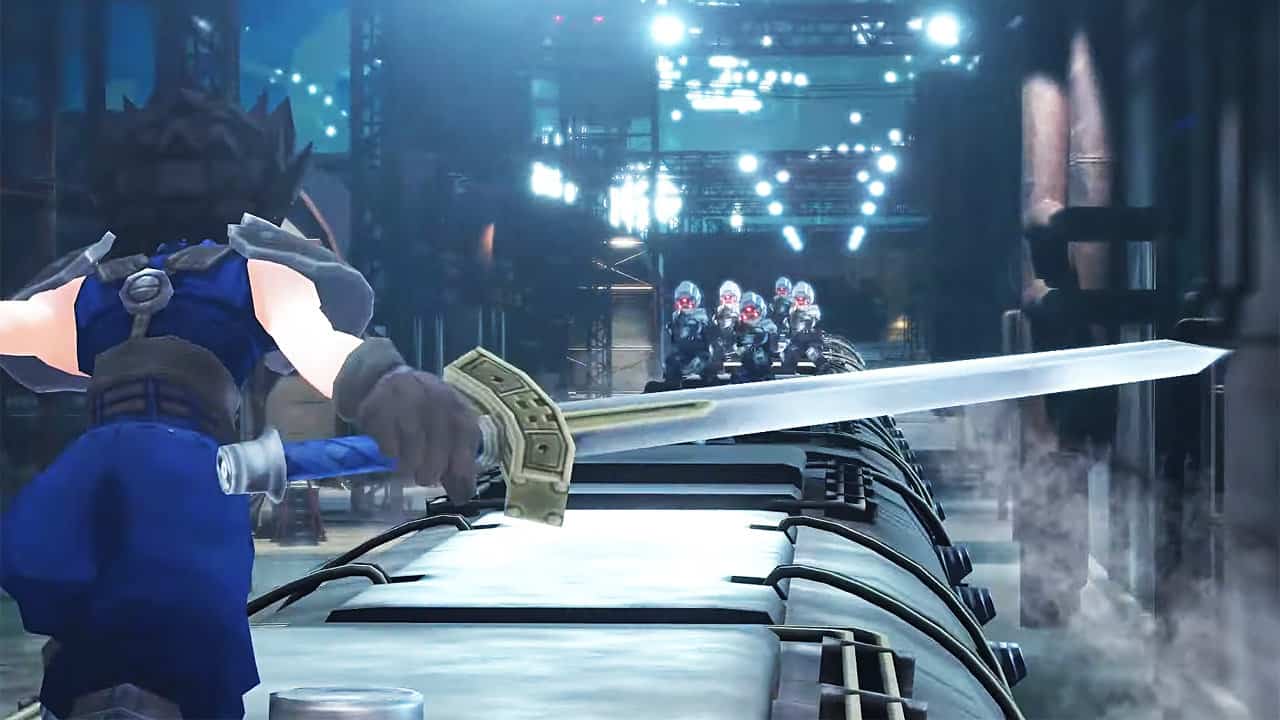Jack has been interested in computers and tech since 10 years old when he decided to dismantle his PC to see how it worked. Ever since Jack has had a passion for IT and gaming beyond any other. He loves the data and testing process and allowing himself to take an analytical and technical approach to PC hardware. He's even gone as far as getting educated in cyber security.
WePC is reader-supported. When you buy through links on our site, we may earn an affiliate commission. Learn more
Last Updated:
Brand new AMD EPYC 7773X. The 7003 series of EPYC CPUs from AMD, code-named Milan-X, are the first server/data centre CPUs to feature AMD’s 3D V-cache. These brand new CPUs will be launching on March 21.
If you’d like to learn more about another up-and-coming AMD release, Zen 4 and AM5, we have dedicated articles for both.
AMD’s EPYC 7003 series will feature four CPUs in its series, featuring the 7373X with 16 cores, the 7473X with 24 cores, the 7573X with 32 cores and the flagship 7773X with a whopping 64 cores. All of the SKUs are also multithreaded, meaning they have 32, 48, 64 and 128 threads respectively.

That’s an impressive amount of technology and power, and it does come at a cost.
The confirmed cost of each EPYC CPU from highest to lowest is as follows:
- 7773X – $8,800
- 7537X – $5,590
- 7373X – $4,185
- 7473X – $3,900
What’s the use case of each CPU? Well, all four CPUs fall into two separate targeted use cases.
AMD suggests that both the flagship EPYC 7773X and the 7573X, both with a TDP of 280W, are the more powerful of the four CPUs and are targeted towards Finite Element Analysis and Structural Analysis. The two 240W CPUs, 7473X and 7373X respectively will be aimed more towards Computational Fluid Dynamics and Electronic Design Automation. This was reported by Videocardz.

Each of the four Milan-X based EPYC CPUs is based on the Zen 3 architecture and supports the SP3 socket, meaning there’s no need to upgrade your motherboard to accommodate the 7003 series of server CPUs, despite some early worries around socket compatibility.
As mentioned above, all four of the new EPYC SKUs will feature AMD 3D V-cache, so it’s not just the 5800X3D getting a taste of the new cache technology. Briefly, 3D cache is stacked vertically to reduce the footprint on the CPU die. When manufacturing CPUs, conserving space is vital and will in most cases have a direct impact on performance if space is not managed efficiently. 3D cache helps keep the space used by the cache to a minimum and helps access speeds too.





